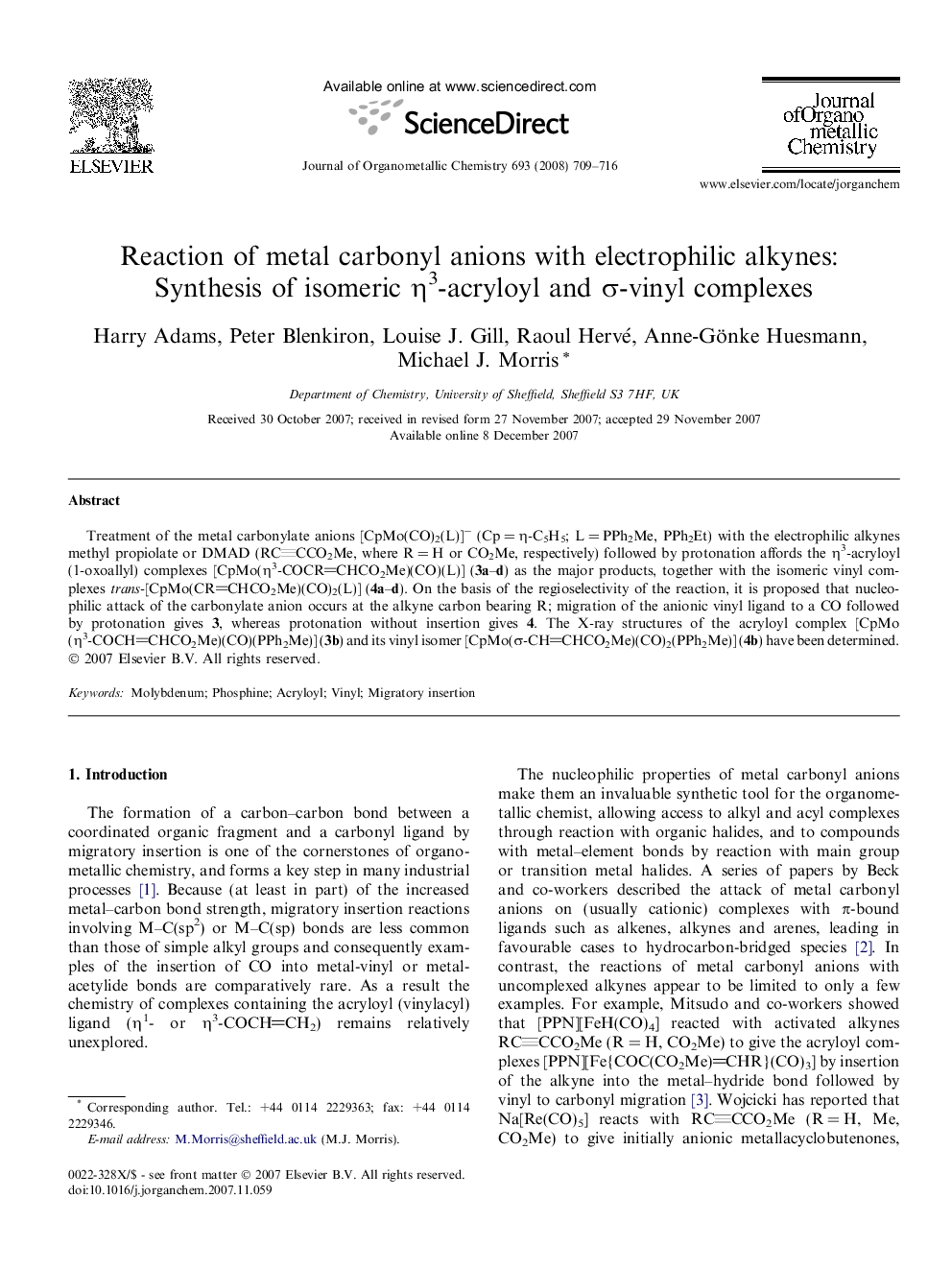| Article ID | Journal | Published Year | Pages | File Type |
|---|---|---|---|---|
| 1323347 | Journal of Organometallic Chemistry | 2008 | 8 Pages |
Treatment of the metal carbonylate anions [CpMo(CO)2(L)]− (Cp = η-C5H5; L = PPh2Me, PPh2Et) with the electrophilic alkynes methyl propiolate or DMAD (RCCCO2Me, where R = H or CO2Me, respectively) followed by protonation affords the η3-acryloyl (1-oxoallyl) complexes [CpMo(η3-COCRCHCO2Me)(CO)(L)] (3a–d) as the major products, together with the isomeric vinyl complexes trans-[CpMo(CRCHCO2Me)(CO)2(L)] (4a–d). On the basis of the regioselectivity of the reaction, it is proposed that nucleophilic attack of the carbonylate anion occurs at the alkyne carbon bearing R; migration of the anionic vinyl ligand to a CO followed by protonation gives 3, whereas protonation without insertion gives 4. The X-ray structures of the acryloyl complex [CpMo(η3-COCHCHCO2Me)(CO)(PPh2Me)] (3b) and its vinyl isomer [CpMo(σ-CHCHCO2Me)(CO)2(PPh2Me)] (4b) have been determined.
Graphical abstractTreatment of the metal carbonylate anions [CpMo(CO)2(L)]− (L = PPh2Me, PPh2Et) with RCCCO2Me (R = H or CO2Me) followed by protonation affords mainly the acryloyl complexes [CpMo(η3-COCRCHCO2Me)(CO)(L)], with small amounts of the isomeric vinyl complexes trans-[CpMo(CRCHCO2Me)(CO)2(L)].Figure optionsDownload full-size imageDownload as PowerPoint slide
